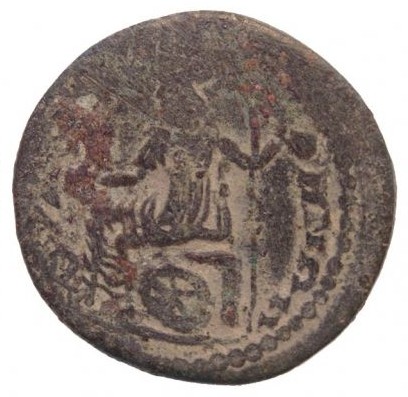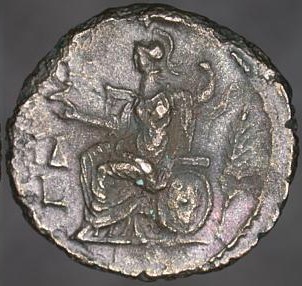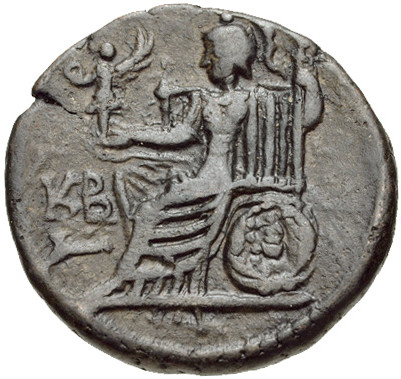
Yahu coin from
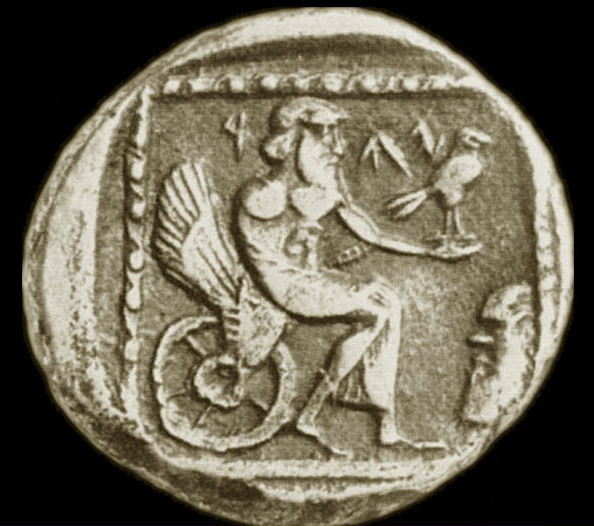
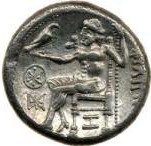
This coin dates to the late 4th century BCE and shows Zeus holding an eagle.
From an Attic kylix (wide bowled drinking cup with handles) there is an image of Hephaestus, dating to 525 BCE. The solar chair is winged and while Hephaestus is not holding a bird in his hand, the arm of the chair stretches out into a cranes head.

Prior to the depiction of Zeus on the throne and even Hephaestus in the winged chair, was that of Athene on a throne or in a chariot, especially depicted with various birds, such as crows, ravens, sea birds, doves, not just an owl. This is a dominant imagery for Athene / Athena, not Zeus, and especially not Hephaestus. She is frequently shown on coins from various times, representing the martial aspect that the patriarchal empires forced her into, not holding a bird, which she is earlier represented with, but holding the later offshoot of herself, the winged Nike, the messenger of victory, which is very necessary to war oriented patriarchal, Indo-European cultures. The three coins below range from 350 BCE to 200 BCE with the clearest image for reference. The older coins I found, were too worn to show much distinction.
